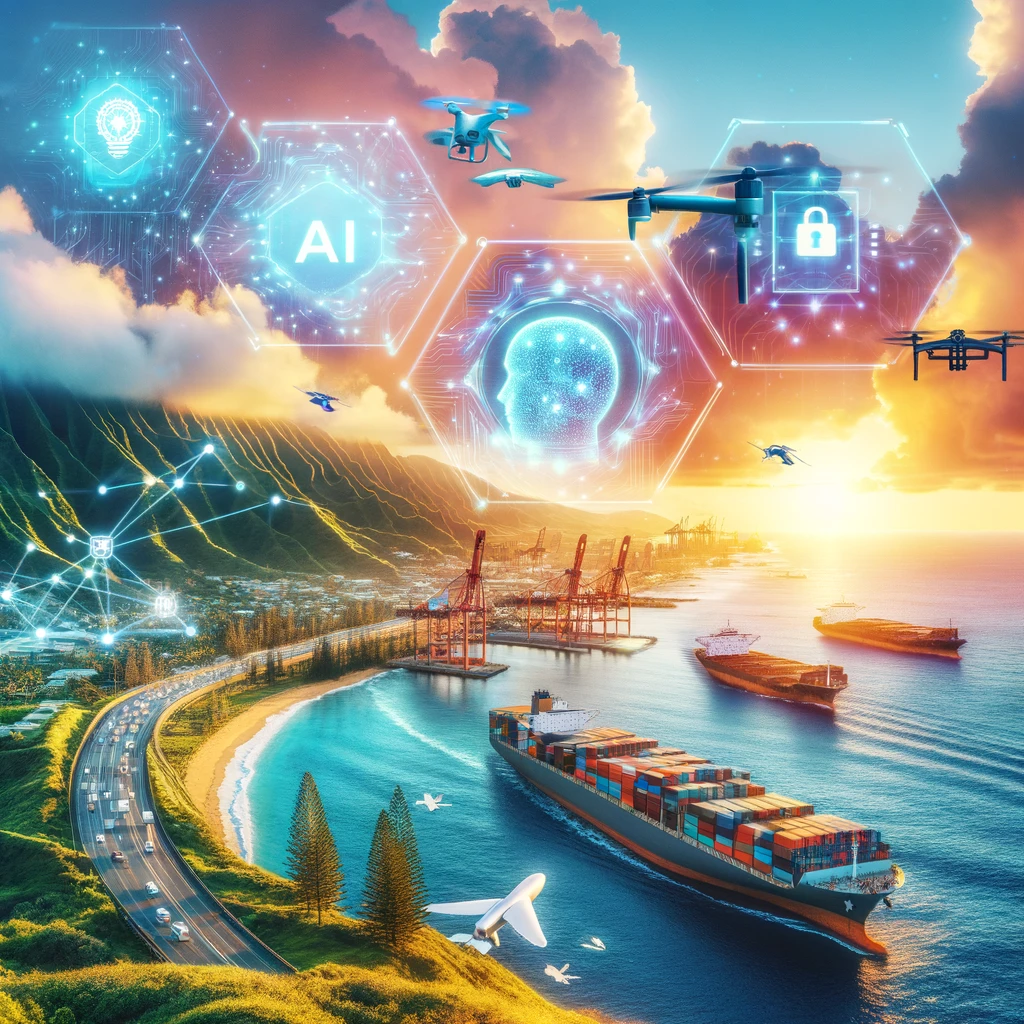
Hawaii’s unique geographic location and landscape present both challenges and opportunities for the logistics sector. As an archipelago, Hawaii depends heavily on efficient logistics for its economic vitality, sustainability, and connectivity to the mainland and the rest of the world. In this context, the adoption of cutting-edge technologies like Artificial Intelligence (AI) and the Internet of Things (IoT) is not just innovative but essential. These technologies are driving significant improvements in efficiency, transparency, and reliability, thereby reshaping Hawaii’s logistics landscape.
Artificial Intelligence (AI) and Machine Learning (ML)
AI and ML are at the forefront of transforming logistics operations in Hawaii. By analyzing vast amounts of data, AI helps optimize routing and delivery schedules, thereby reducing fuel consumption and ensuring timely deliveries even across challenging terrains. For instance, AI-powered predictive analytics can forecast weather conditions and shipping traffic, enabling companies to make proactive decisions to avoid delays. Furthermore, AI is also streamlining the sorting and packing processes, significantly reducing the time from order to delivery.
Internet of Things (IoT)
IoT technology has become a game-changer for Hawaii’s logistics sector by enhancing real-time tracking and monitoring. Hawaii Transfer utilizes this technology to keep tabs on all of our drivers and trucks in real-time. With IoT sensors installed on vehicles and cargo, logistics companies can now offer unparalleled visibility into the supply chain. This real-time data allows for immediate adjustments to routes in response to traffic or weather conditions, ensuring that perishable goods arrive fresh and intact. Moreover, IoT is instrumental in asset management, helping companies monitor the condition of their vehicles and equipment, thereby reducing downtime and maintenance costs.
Integrating Technologies for a Synergistic Effect
The real power lies in the integration of AI, and IoT, creating a synergistic effect that magnifies their benefits. For example, IoT devices can collect data in real time, and AI can analyze this data to optimize routes and predict maintenance. This integrated approach not only enhances operational efficiency but also builds trust among all stakeholders in the logistics chain.
Looking Ahead
As Hawaii continues to embrace these technological advancements, the future of its logistics sector looks promising. The ongoing digital transformation will not only overcome geographical challenges but also set new standards for efficiency, reliability, and sustainability in logistics. However, for Hawaii to fully leverage these benefits, continuous investment in digital infrastructure, along with fostering partnerships between tech companies and logistics providers is essential. Embracing these technologies will undoubtedly place Hawaii’s logistics sector at the forefront of innovation, making it a model for other regions to follow.
In conclusion, integrating AI, and IoT is revolutionizing Hawaii’s logistics sector, offering solutions to its unique challenges. As these technologies evolve, they promise to usher in an era of improved efficiency, transparency, and security, solidifying Hawaii’s position as a logistics hub in the Pacific.


